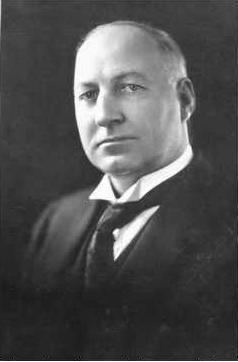Preceded by Richard L. Butler Name Lionel Hill | ||
 | ||
Lionel Hill, teen battling cancer, graduates from Hughes High School
Lionel Laughton Hill (14 May 1881 – 19 March 1963) was the thirtieth Premier of South Australia, representing the South Australian Branch of the Australian Labor Party.
Contents
- Lionel Hill teen battling cancer graduates from Hughes High School
- CPD Accredited Google Hangout 29th March 2019 Guests Lionel Hill and Michael Dean
- Early life
- Parliament
- Death
- References
CPD Accredited Google Hangout - 29th March 2019 - Guests: Lionel Hill and Michael Dean
Early life
Born in Adelaide, South Australia but raised on a farm near Maitland, Hill left school aged 12 to work on the South Australian government railways, where he first became involved in the labour movement. This led to his appointment as the secretary-treasurer of the Boilermakers' Assistants' Union in 1901, a position he held until 1914. Hill was also able to combine his work with a distinguished Australian rules footballing career, starring for Norwood Football Club in the South Australian National Football League in the first years of the twentieth century and representing South Australia.
Parliament
After marrying in 1908, Hill further increased his stature in the labour movement in 1910 by becoming secretary of the South Australian branch of the Australian Tramway Employees' Association and its federal president in 1912. Hill then gained Australian Labor Party pre-selection for the South Australian House of Assembly electorate of East Torrens, which he duly won at the 1915 election.
In parliament Hill was considered "a slow thinker and unimpressive orator" but gained statewide recognition for his role as President of the Anti-Conscription Council, an issue so divisive during World War I that it caused the 1916 Labor split. In the wake of the split, Hill resigned his East Torrens seat in 1917 to unsuccessfully contest the Australian Senate elections as an anti-conscriptionist Labor candidate.
Remaining in the political spotlight by becoming President of the South Australian branch of the Labor Party, Hill returned to South Australian politics at the 1918 election as the member for the rural electorate of Port Pirie. His time in parliament was undistinguished but when the John Gunn led ALP won government following the 1924 election Hill was appointed Minister of Education and industry and Commissioner of Public Works. And upon Gunn's resignation in August 1926, Hill became Premier and Treasurer of South Australia for eight months until the 1927 election when the Richard Layton Butler led Liberal Federation returned to power and Hill became opposition leader.
The onset of the Great Depression, in combination with a serious drought gripping the state, cast shadows over the 1930 election as the Liberal Federation struggled to combat the resulting severe economic downturn. During the election campaign Butler cautioned voters to expect hardships ahead, while Hill promised a golden future under the slogan "Work for the Workless; Land for the Landless and Equitable Taxation for All" and was elected in a landslide, winning 30 of the 46 seats in the House of Assembly, the largest percentage of seats won by South Australian Labor in any election.
Hill returned as Premier and treasurer but faced problems like high unemployment, a formidable state debt, a shrinking economy and a strike prone workforce. His cabinet found themselves in the unenviable position of being quite incapable of finding a solution to these problems and led to Hill accepting the contentious Premiers' Plan of 1931 which advocated reductions in spending (including aid to the unemployed), public works and wages. Such was the public outcry against the Plan, particularly from traditional Labor supporters, that the executive of the South Australian ALP expelled Hill and his cabinet from the party, leaving Hill as Premier only with the support of the opposition Liberal and Country League (the successor to the Liberal Federation) and leader of the splinter Parliamentary Labor Party.
Hill continued to stagger from crisis to crisis as riots and protests rocked the state and unemployment reached 35%. In the lead up to the 1933 election Hill continued to quarrel with his cabinet colleagues, leading to his resignation from parliament and the Premiership on 8 February 1933 to controversially assume the position of South Australian Agent-General in London, leaving his successor Robert Richards with the unenviable task of leading the state until the election. At that election, the LCL won a sweeping victory; the three competing Labor factionsthe Parliamentary Labor Party, the official ALP and the Lang Labor Partywere reduced to only 13 seats between them.
Controversy and Hill remained on close terms as complaints about his performance as Agent-General led to Hill's resignation from that position in August 1934 and his return to South Australia, where he joined the LCL and sought preselection. This failed to materialise but Hill was appointed in 1936 by the federal government to chair the ACT Industrial Board.
Hill returned to South Australia in 1958 and found the lure of politics too great, successfully standing for Kensington and Norwood council.
Death
Any plans of further electoral success were stymied only by his death in 1963. Thirty years after his departure from the ALP, he was still disliked by many Laborites with long memories. Ross McMullin, in his history of the Labor Party, The Light on the Hill, describes him as one of the worst Labor leaders federally or in any state.
